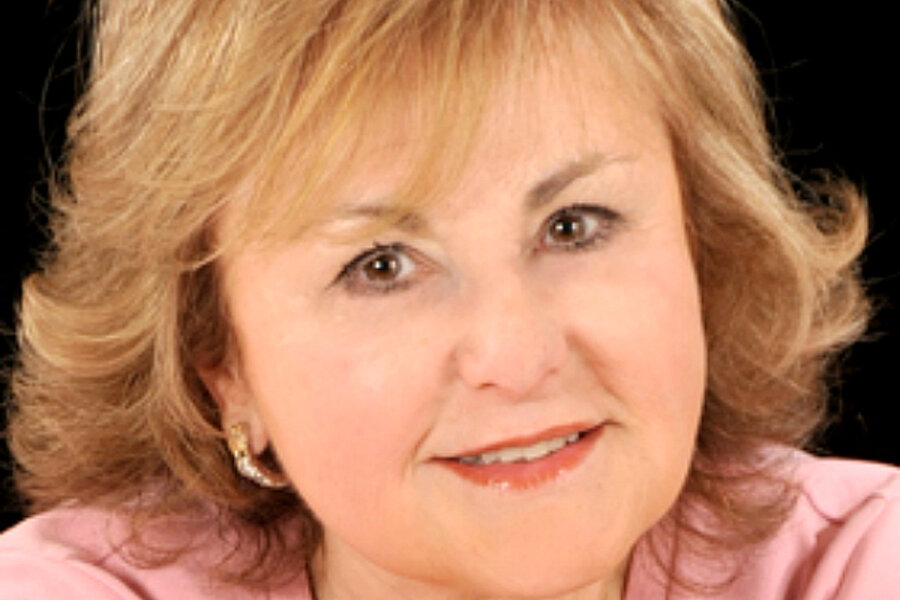Agnes Vertes tells her story as a Holocaust survivor
Loading...
| Weston, Conn.
Beneath the smile lines and softly creased hands of Agnes Vertes is the child that survived.
“I didn’t consider myself a hidden child because I wasn’t in an attic. I wasn’t in a closet,” Agnes Vertes says. “I didn’t even consider myself a survivor like the few who came back from Auschwitz. It wasn’t until later on that I realized, ‘Hey, I went through hell.’ ”
Ms. Vertes is president of the Holocaust Child Survivors of Connecticut (HCSC). Its members, who were between 2 and 18 during the Holocaust, feel duty-bound to share their stories, particularly with children and teachers. So they crisscross the Nutmeg State speaking in schools, churches, synagogues, and community centers.
But time is short.
“There are fewer and fewer of us. Every year someone dies in our group. We aren’t going to live forever,” Ms. Vertes says.
Of the 6 million Jews who perished in German concentration camps, 1.5 million were children. Its unclear how many children did survive, but they are now well into their 70s, 80s and 90s.
That the ranks of survivors are dwindling is, as the cliché goes, a fact of life, says Dr. David G. Marwell, Director of the New York Museum of Jewish Heritage. “It’s an indication of the passing of history. We can bemoan that or we can do something about it,” Dr. Marwell says.
And so groups such as HCSC and the Museum of Jewish Heritage are reaching out to second-generation children of survivors to tell their parents stories.
Nothing is more effective in making history come alive than an eyewitness account, Marwell says. “It's clear that survivors speaking directly to children is the most powerful and authentic teaching tool we have.”
The testimony of tens of thousands of Holocaust survivors has been recorded through Steven Spielberg’s Shoah Project and videos such as Vertes’ own “One out of Ten.” That award-winning documentary gives an overview of the Holocaust through the stories of eight child survivors from eight different countries.
In 2003 Vertes also produced “Passport to Life,” a documentary about the thousands of Jews saved from the Nazis.
Vertes and her band of survivors want to educate others about discrimination and the evils of Nazi Germany.
“Prejudice is a lethal weapon. We teach that one person can make all the difference,” she says. “Many of us wouldn’t be here if it weren’t for one person.”
For Vertes that one person was an impoverished Protestant woman.
Vertes was born Agnes Katz in Budapest, Hungary, in 1940. Germany occupied Hungary in March 1944; deportations of the nation’s Jews began in May. Hungarian Jews represented about one half of all Jews murdered at the Auschwitz-Birkenau camp, according to the United States Holocaust Memorial Museum.
First Vertes, her younger sister, and her mother lived with relatives in the countryside to escape the bombing. Then her father came for them.
“Not one of those in the villages survived. If I stayed there I definitely would’ve been smoke,” she says, referring to the crematoriums at Auschwitz.
Soon after she and her sister returned to Budapest a woman came and promised their parents she would keep the girls safe.
“The lady said, 'Don’t make a sound, don’t cry.' She told my mother not to follow. My Mom followed. When I got on the tram I saw her, my mother – she was crying,” Vertes recalls.
The woman was extremely poor; her house had dirt floors. She also remembers feeling safe – until the Germans attacked and destroyed the woman’s home.
After that Vertes, her sister, and other children wandered the streets for several days until they came upon a Red Cross home for children. Every day the Nazis came looking for Jewish children.
“I remember one incident. A pair of really nasty Hungarian Nazis came. My little sister, she’d just learned to talk, ran to one of them and tugged on his pant leg,” Vertes says. “ ‘Hey, Mr. Soldier can I try on your cap,’ she said. He picked her up and said, ‘How can anyone but an Aryan child be so cute as this?’ They left. This is how my sister saved 100 Jewish kids.”
Vertes and her sister reunited with their parents in 1945. In 1957 the family moved to the Bronx, N.Y. There she met her husband, Michael. He, too, was a Holocaust survivor.
It wasn’t until 1993 that Vertes decided to share her story. She’d just met a group known as the Holocaust Child Survivors of Connecticut. Since then she’s shared her story hundreds of times, including at The Conservative Synagogue in Westport, Conn.
"We cherish and honor the presence of Agnes Vertes and the Holocaust Child Survivors of Connecticut in our community,” Rabbi Jeremy Wiederhorn of the synagogue says. "This is the last generation that will have the opportunity to hear the stories first-hand, and then the responsibility will fall upon us to keep their voices alive."





